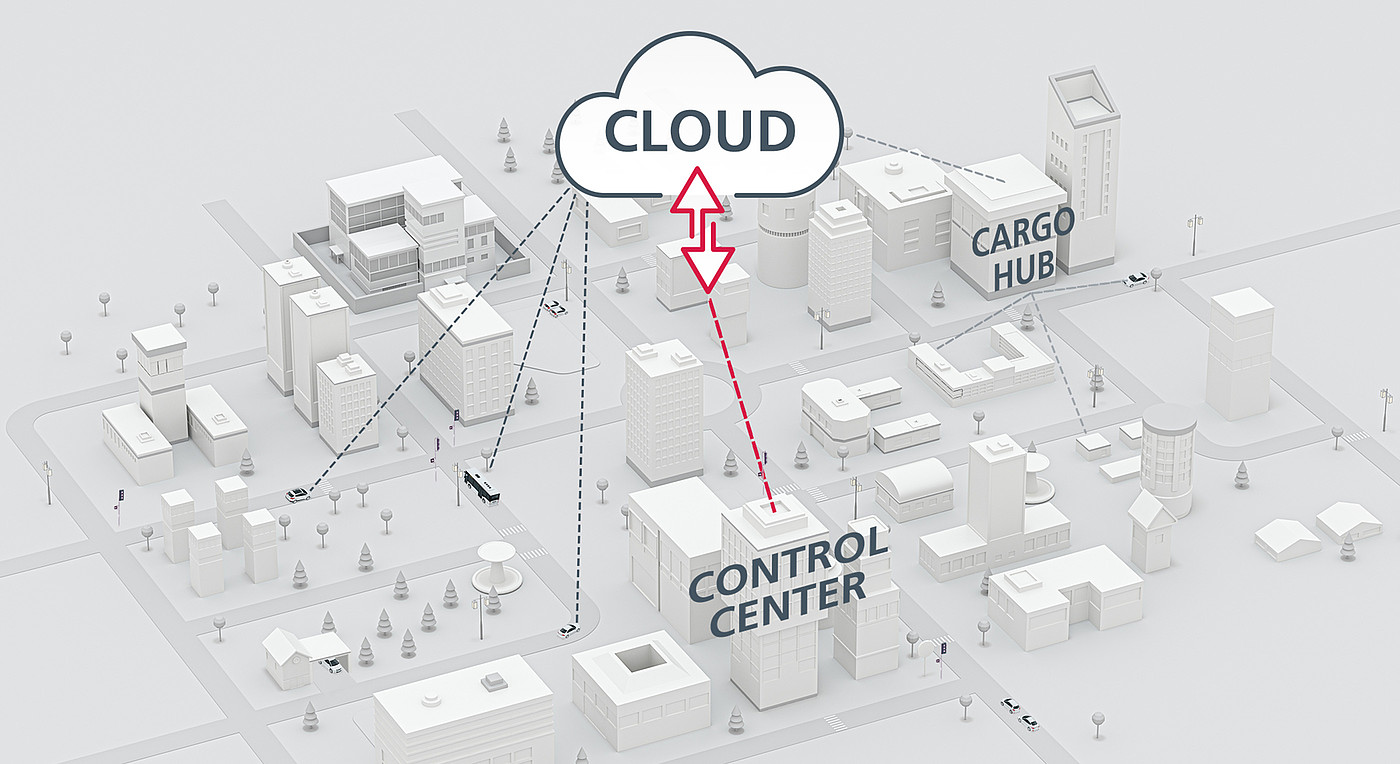
Successful mobility services need to be safe and comfortable. Truly comprehensive solutions can only be realized if we think in terms of a holistic mobility system from the very beginning. The combination of new technologies makes services such as mobility as a service (MaaS) possible. The way we work is therefore interdisciplinary and open to new technologies.
What role will scheduled quotations, on-demand quotations and individual motorization play in the future – and what will become accepted? When is mobility as a service (MaaS) attractive to users? What forms of mobility are being developed for urban and rural regions?
Network technologies for mobility services and users make needs-based, customized travel solutions possible. For large cities, we expect MaaS to become the dominant form of mobility – with contracts between mobility providers and users, and put into practice using networked, automated, shared and electrified vehicles.
The EDAG CityBot represents our MaaS vision for inner cities. In the Campus FreeCity research project, an interdisciplinary team from the Vehicle Engineering, Electrics/Electronics, Software & Digitalization and Smart City departments are researching and developing technologies, solutions and processes to bring about this vision.
What information do providers and users need to bring about the perfect travel experience? What added value do the users gain by sharing their data with the providers? What makes complex connected mobility systems attractive – and robust?
Up-to-date user data and real-time information on transport modes and traffic conditions are what fuel tailor-made travel offers. We develop and test connectivity solutions which provide this data with low latency.
One success factor for pleasant travel experiences is to supply the users with a constant flow of information – information that is up-to-date, relevant and also useful – without unnecessary ballast. In line with this requirement, we develop new ideas for user front ends with backend and cloud connections which seamlessly dock into the smart city.
How can the already high level of active and passive safety be further improved? Will automated vehicles require fewer airbags than vehicles controlled by humans? What does the interior of an automated vehicle – which needs to be both comfortable and safe – look like?
With artificial intelligence and related digital technologies, we strengthen the robustness of active safety systems with high-availability camera signals even in dirty or wet conditions.
In passive safety, we boost the potential of lightweight construction. One current challenge is passenger safety during automated driving. How can we design additional comfortable seating positions so that they are also safe?